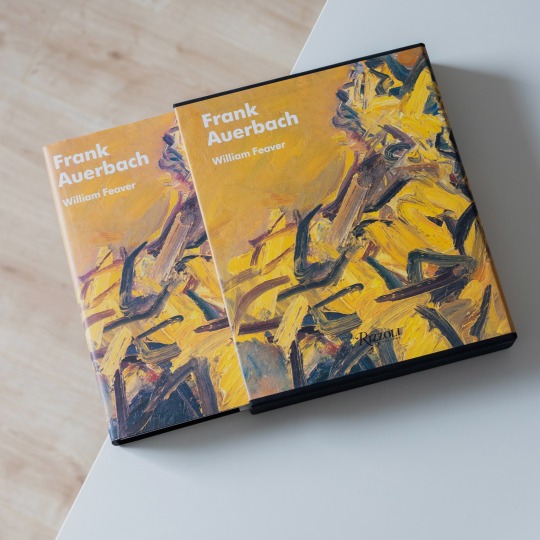#david bromberg
Video
youtube
Demon In Disguise - David Bromberg
2 notes
·
View notes
Video
youtube
David Bromberg ~ Someone Else's Blues
~ ♫♪♫ ~
When I woke up this morning
everything seemed all right
My woman called me from New York City
She said, "Darlin', did you sleep well last night?"
She told me I got three checks in the mail
Hallelujah!
She said, I got a refund on my union dues
But when I woke up this morning
Then I musta had someone else's blues
I swear I don't know why
I don't know why I feel this way...
Well, I got, I got someone else's blues in the midst of an almost perfect day
I don't owe anyone any more money
All my cavities are filled
If I pull my hand outside my pocket too fast
I might drop a couple of fifty-dollar bills
I got more dope than I can smoke
I got more chicks than I can use
Somehow when I woke up the morning
I guess I had somebody else's blues
I swear I don't know why...
I don't know why I feel this way
You know I got someone else's blues in the midst of an almost perfect day
~ ♫♪♫♪♫ ~
I swear I don't know who the man is that this trouble belongs to
I wonder did he do a murder?!
Great God, what did that man do?!
He's a no-good lying rascal
but I guess he's pretty smart
Cuz he's outside havin' himself a real fine sweet, happy time
And his blues are right here
breaking my heart
I swear I don't know why
I don't know why I feel this way
~ ♫♪♫ ~
I got someone else's blues in the midst of an almost perfect day
~ ♫♪♫ ~
6 notes
·
View notes
Text
youtube
Ringo Starr - Sunshine Life for Me (Sail Away Raymond) featuring George Harrison , Levon Helm, Robbie Robertson, Rick Danko, Garth Hudson, David Bromberg, and Klaus Voormann
#the beatles#george harrison#ringo starr#the band#robbie robertson#levon helm#rick danko#garth hudson#david bromberg#klaus voormann#Ringo!#Youtube
3 notes
·
View notes
Text
Delia's Gone: True Crime Murder Ballads Pt. 1

If you're a fan of old school folk, country, and jazz, chances are you've heard a song or two about Delia. But what you may not know is that these songs are inspired by real people. Songwriters through the years have taken varying degrees of creative license when telling the tale of Delia's fate, and the actual events surrounding her life and death are largely forgotten. She was a gambler in some versions, a prostitute in others. Today, the most well known version describes her as an evil woman whose luck ran out when she messed with the wrong guy.
In reality, Delia Green was a 14-year-old Black girl living in Savannah, Georgia in 1900 when she was shot and killed at a Christmas Eve party by 15-year-old Moses Houston. Intoxicated, Houston began publicly bragging to party goers about his sexual relationship with Green, using language to imply some sort of ownership over her. She denied it and rejected his claims, calling him a "son of a bitch" in the process. Ego bruised, he responded by shooting her in the groin. She succumbed to her injuries hours later, on Christmas day, and was buried in an unmarked grave in Savannah's Laurel Grove Cemetery. Houston was sentenced to life in prison, but only served 13 years before being granted parole.
Tragic circumstances like these often proved to be fertile grounds for songwriters, who rushed to use jaw-dropping breaking news stories to inspire fresh material. Though the original writers have been lost to time, Library of Congress field recordings suggest Delia Green was a popular lyrical subject from the time of her death until the end of the 1910s. While the tale of Green's murder fell out of favor for several decades, it returned with a vengeance by the middle of the century. Piedmont blues guitarist Blind Willie McTell recorded "Delia" and "Little Delia" in the 1940s, and Bahamas-based calypso musician Blake Alphonso Higgs recorded "Delia's Gone" in the 1950s. From there, the American folk music revival aroused a flurry of "Delia" covers, including from Pete Seeger, Bob Dylan, Josh White, and Burl Ives.
Johnny Cash released his own version in 1962, and another in 1994, the latter accompanied by a grotesquely glamorous Anton Corbijn-directed music video starring supermodel Kate Moss. Throughout the clip, Moss is posed dead-eyed beneath a noose and motionless at the bottom of a grave, dirt raining down on her. Cash, when not carrying Moss' lifeless body around, stands in a cemetery strumming his guitar, "DELIA" printed on the cross behind him. The song helped propel Cash's career comeback, with the LA Times proclaiming "Delia's Gone, But Man in Black's Back."

The recording itself is also particularly nasty. Adding verses that describe Delia as "cold and mean," Cash submits his actions as a blueprint for other men to follow: "So if your woman's devilish, you can let her run or you can bring her down and do her like Delia got done." While this rendition is particularly brutal considering the story behind the song, it's worth noting that this cold-hearted interpretation potentially matches the emotions of the moment more truthfully. During his confession, Houston reportedly exhibited zero remorse, saying he'd do it all over again if given the chance.
Not all versions are so cruel, however. Harry Belafonte released multiple stirring renditions, first in 1954 and again in 1967, lyrics rewritten to present the reason for Delia's mysterious absence as unknown. He also movingly covered the original in 1959, making him a particularly skilled interpreter of this story. And David Bromberg's 2016 re-recording is another standout among dozens of "Delia" performances.
In 2020, 120 years after her death, the non-profit Killer Blues Headstone Project raised the funds to finally deliver Green her own grave marker. It's a thoughtful tribute to the girl who has inspired countless musicians to pick up their guitar, but whose actual existence has been largely forgotten. So the next time you're singing along with "one more round, Delia's gone," remember the child whose death inspired those words. Rest in peace, Delia Green.
Follow me: Instagram / TikTok / Amazon
#delia green#delia's gone#delia#true crime#savannah#georgia#murder ballad#murder#blind willie mctell#little delia#pete seeger#bob dylan#johnny cash#burl ives#kate moss#harry belafonte#david bromberg#music
16 notes
·
View notes
Text
youtube
A Bowie Sakamoto meeting was a missed opportunity. Ringo Starr's Ringo – an apt title – is another one. The platter found him calling some friends, including his coworkers in the Beatles. While the LP established a template for a Starr album – a party with a lot of famous guests and Ringo as the host –, that one also contains a rare instance of all the Beatles being on the same album after the break-up. True, each of them guested separately, yet Ringo might have thought he could've patched things up … we can project too much in this. I mean, Let It Be already showed some hints how Beatles could've struggled during the 70's. Sure, Ringo was an opportunity for them to reconnect then, but we, yes, we have to be honest – we should be happy they didn't.
#Youtube#ringo starr#ringo#sunshine life for me (sail away raymond)#george harrison#robbie robertson#levon helm#garth hudson#david bromberg#rick danko#klaus voormann#vini poncia#richard perry#70's music#rock
1 note
·
View note
Text
youtube
Bob Dylan, Dr. John, Flaco Jimenez, David "Fathead" Newman, David Bromberg, Kenny Kosek, Augie Meyers, Arif Mardin, etc... en el álbum "Doug Sham Band", el debut en solitario de Doug Sham en enero de 1973 después de la separación de Sir Douglas Quintet. "(Is Anybody Going To) San Antone" es una de las cuatro canciones en las que aparece Dylan, las otras tres son "Wallflower", "Blues Stay Away From Me" y "Me and Paul".
0 notes
Video
youtube
Motivational Music in the Morning ... #JerryJeffWalker & #DavidBromberg, #DriftinWayOfLife [Official Live Track] (2023) #MMitM1
0 notes
Text
David Bromberg Quintet live at Minnesota Square Park (Part of Rock Bend Folk Festival) in St. Peter, MN- 9/10/22








#2022#americana#americana music#capture minnesota#concert#concert photography#david bromberg#david bromberg quintet#explore minnesota#live music#live music photography#minnesota#minnesota square park#rock bend folk festival#st. peter#st. peter minnesota
0 notes
Video
youtube
David Bromberg - Medley Of Irish Fiddle Tunes - 4/17/1976 - Capitol Thea...
7 notes
·
View notes
Video
youtube
As the Years Go Passing By ~ David Bromberg
~ ♫♪♫♪ ~
There is nothing I can do, if you're here to hear me cry
Nothing I can do if you're here to hear me cry
But my love will follow you, as the years go passing by
I gave you everything, everything, that's one thing you can't deny
I gave you everything, it's one thing you can't deny
My love will follow you, as the years go passing by
~ ♫♪♫♪♫ ~
There is nothing I can do, if you're here to hear me cry
No, if you're just here to hear me cry
But my love will follow you, as the years go passing by
~ ♫♪♫♪♫ ~
Oh, I'll leave it up to you, baby, so long good bye
Yes, I'll leave it up to you, farewell, good bye
But my love will follow you as the years go passing by
~ ♫♪♫ ~
2 notes
·
View notes
Text


Although his oeuvre covers only a limited array of people and places Frank Auerbach's (*1931) paintings are most inventive contributions to 20th century art: the thick surfaces of his canvases possess a haptic quality rarely seen in figurative art. They are the result of a process that captures its object in one go but is often foregone by a myriad of attempts that Auerbach deemed not good enough. Himself one of Auerbach's sitters William Feaver, long-term critic of "The Observer", couldn't be better suited to pen a comprehensive monograph on the artist: with "Frank Auerbach", published in 2009 by Rizzoli, Feaver provides an all-encompassing overview of Auerbach's life and work that lays particular emphasis on his influences, work process and the close relationship to the people and places he depicts. Influenced by David Bromberg and Picasso but also old masters like Constable and Rembrandt, Auerbach adopted the intimacy of their subjects, an intimacy that also finds expression in the weekly sessions he devotes to his subjects. Beyond the eloquent and very insightful analysis of Auerbach's life and work William Feaver also includes an extensive catalogue of some 900 works plus a total of 200 color plates showing major paintings from all work phases.
With this very comprehensive and beautifully illustrated monograph Feaver has published the relevant reference work on the British painter has recently been released in an updated edition. Warmly recommended!
18 notes
·
View notes
Photo







Post 866
“the victim’s brother, father and sister bare “animosity” toward me, so I will not address them” -- Offender
David Anthony Parga, California inmate AV0978, born 1986, incarceration intake in 2014 at age 28, sentenced to 50 years to life, projected discharge date not available
Murder
A member of the Westside La Habra gang that is tied to the Mexican Mafia, Parga was found guilty of second-degree murder and sentencing enhancements for being the triggerman in the fatal shooting of Leland Washington, an African-American Cal State Fullerton student with no gang affiliations who was attending a Halloween 2006 party in La Habra.
Investigators and prosecutors originally surmised Parga killed Washington because he was black and to further the activities of the Westside gang, which like many Latino gangs in neighboring Los Angeles County has ties to the Mexican Mafia. Those gangs have for years targeted African Americans to drive them out of LA neighborhoods.
But Senior Deputy District Attorney Jim Mendelson would tell jurors Washington was part of a group that had been kicked out of the party and later returned to hang out outside, something that Parga considered disrespectful to his gang. After the party host warned his invited guest Washington and his group to leave, Parga walked up to the student athlete and shot him four times with a .22-caliber pistol. A bullet ripping through Washington's aorta, liver and small intestine caused him to bleed to death internally.
Parga's attorney, Ken Morrison of the Orange County Alternate Defender's Office, said authorities got the wrong man, according to a City News Service report that adds Parga fired Morrison and represented himself at today's sentencing in Santa Ana.
Imposing the 50-year term, Judge Steven Bromberg called Parga a “coward,” reports City News Service's courtroom reporter Paul Anderson.
“This was a senseless and a very, very stupid killing of a young man about to graduate college,'' said Bromberg, referring to Washington being a semester away from bachelor degrees in accounting and business administration. “The defendant's conduct was about as cold-blooded as cold-blooded can be, and that's what makes you a coward.”
Parga also got his chance to address the court, saying he felt Leland's brother, father and sister bore “animosity” toward him. Thus, he directed his comments to Bessie Washington, Leland's mother.
“I know there's nothing I can do to bring (the victim) back and I'm deeply sorry about what happened to him. To you, specifically, I want to say I'm sorry about what happened to your son.”
3f
26 notes
·
View notes
Text

Album Review: Various Artists - Bear’s Sonic Journals: Sing Out!
When two-thirds of the Grateful Dead, Country Joe McDonald, Rosalee Sorrles and Kate Wolf got together to raise funds at the Seva Sing Out for Sight benefit at Berkeley Community Theater, organizer and emcee Wavy Gravy termed the April 25, 1981, benefit a “mini-Woodstock.”
And he reprised his famous stage announcement from 12 years earlier, declaring: “What we have in mind is a fine set of eyes for 300,000.”
In the interim, the musicians provided the audiences’ ears with fine sets of music as captured by Owsley “Bear” Stanley and just released as Bear’s Sonic Journals: Sing Out!, volume 10 of the ongoing series which seeks to find and preserve these reels and release what’s releasable. On that note, it should be mentioned Odetta also performed on this evening, but Stanley’s foundation was unable to secure permission to release her music.
As would be expected for a Bay Area gig in ’81, the Dead members closed the show, beginning with an surprise, 20-minute performance from the Rhythm Devils - aka Grateful drummers Bill Kreutzmann and Mickey Hart - who reprised their nightly drum duet on a scaled-down set of kits. Posterity is lucky to have it; however, drum showcases by definition have limited appeal.
The pair, joined by bassist John Kahn, stuck around to accompany Jerry Garcia and Bob Weir for their acoustic set, which mirrored Dead’s 1980 15th-anniversary celebration with unplugged songs like “Dark Hollow,” “Monkey and the Engineer,” “Oh, Babe it Ain’t No Lie,” “On the Road Again” and others.
“We started out kinda like this,” Weir says after the opening “Deep Elem Blues. “We wanted to be the Rocky and Bullwinkle of rock ‘n’ roll.”
The entire nine-song performance is splendid, and particularly interesting for the slow - but acoustic - rendering of “Friend of the Devil” and the evening-closing “Oh Boy!”
Preceding the Rhythm Devils, Wolf alludes to the occasion with stunning renditions of “20/20 Vision” and “Eyes of a Painter,” among other songs, during a six-song set that finds Gravy joining in for a wobbly rendition of the Youngblood’s “Get Together.” While the sound of this and every other performance is flawless, the producers left in a bit of tape degradation in the middle of Wolf’s set to sonically illustrate the importance of tracking down and restoring the Bear’s countless recordings.
With Mitch Greenhill providing a second guitar, Sorrels performs a lovely folk set during which she professes her love for San Francisco on the original “12 Adler Place” and nods to her genre’s roots on “If You Love Me” and “The Loving of the Game,” a number whose resonance remains so clear, David Bromberg and Michael Cleveland have each cut it in recent years.
Opening the evening, McDonald tied together the hopefulness of the Woodstock generation and the ominous dawn of the Reagan era by reprising “The Fuck Cheer,” retrofitting “Feel-Like-I’m-Fixin’-to-Die Rag” with references to Iran and Afghanistan, remembering his friend Joplin on “Janis” and looking toward a potentially dystopian future on “Picks & Lasers.” But perhaps more illuminating are “Slide Trombone Blues,” which McDonald plays on the titular instrument and his instrumental rendering of “Oh! Susanna” on acoustic guitar; for they show another side of the quirky folkie.
It’s no substitute for being there. But much like the Woodstock movie and albums, Sing Out! helps those who couldn’t be there get some idea how wonderful Wavy Gravy’s mini-Woodstock of ’81 must’ve been.
Grade card: Various Artists - Bear’s Sonic Journals: Sing Out! - A-
3/20/24
#bear’s sonic journals: sing out!#2024 albums#owsley stanley#grateful dead#jerry garcia#bob weir#mickey hart#bill kreutzmann#the rhythm devils#john kahn#jerry garcia band#wavy gravy#seva#the youngbloods#kate wolf#rosalee sorrles#odetta#country joe mcdonald#country joe and the fish#david bromberg#michael cleveland#bear’s sonic journals#the owsley stanley foundation
0 notes
